Lihua Cai
Incremental Semi-supervised Federated Learning for Health Inference via Mobile Sensing
Dec 19, 2023Abstract:Mobile sensing appears as a promising solution for health inference problem (e.g., influenza-like symptom recognition) by leveraging diverse smart sensors to capture fine-grained information about human behaviors and ambient contexts. Centralized training of machine learning models can place mobile users' sensitive information under privacy risks due to data breach and misexploitation. Federated Learning (FL) enables mobile devices to collaboratively learn global models without the exposure of local private data. However, there are challenges of on-device FL deployment using mobile sensing: 1) long-term and continuously collected mobile sensing data may exhibit domain shifts as sensing objects (e.g. humans) have varying behaviors as a result of internal and/or external stimulus; 2) model retraining using all available data may increase computation and memory burden; and 3) the sparsity of annotated crowd-sourced data causes supervised FL to lack robustness. In this work, we propose FedMobile, an incremental semi-supervised federated learning algorithm, to train models semi-supervisedly and incrementally in a decentralized online fashion. We evaluate FedMobile using a real-world mobile sensing dataset for influenza-like symptom recognition. Our empirical results show that FedMobile-trained models achieve the best results in comparison to the selected baseline methods.
Wearable Sensor-based Multimodal Physiological Responses of Socially Anxious Individuals across Social Contexts
Apr 03, 2023

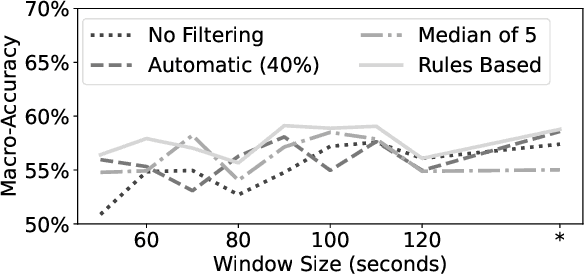
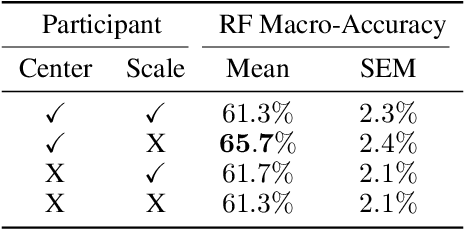
Abstract:Correctly identifying an individual's social context from passively worn sensors holds promise for delivering just-in-time adaptive interventions (JITAIs) to treat social anxiety disorder. In this study, we present results using passively collected data from a within-subject experiment that assessed physiological response across different social contexts (i.e, alone vs. with others), social phases (i.e., pre- and post-interaction vs. during an interaction), social interaction sizes (i.e., dyadic vs. group interactions), and levels of social threat (i.e., implicit vs. explicit social evaluation). Participants in the study ($N=46$) reported moderate to severe social anxiety symptoms as assessed by the Social Interaction Anxiety Scale ($\geq$34 out of 80). Univariate paired difference tests, multivariate random forest models, and follow-up cluster analyses were used to explore physiological response patterns across different social and non-social contexts. Our results suggest that social context is more reliably distinguishable than social phase, group size, or level of social threat, but that there is considerable variability in physiological response patterns even among these distinguishable contexts. Implications for real-world context detection and deployment of JITAIs are discussed.
Graph Neural Networks in IoT: A Survey
Mar 31, 2022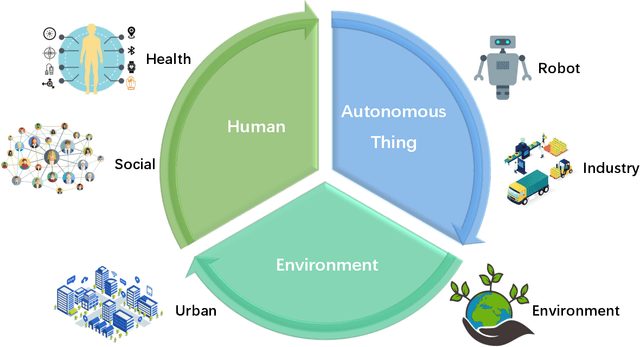
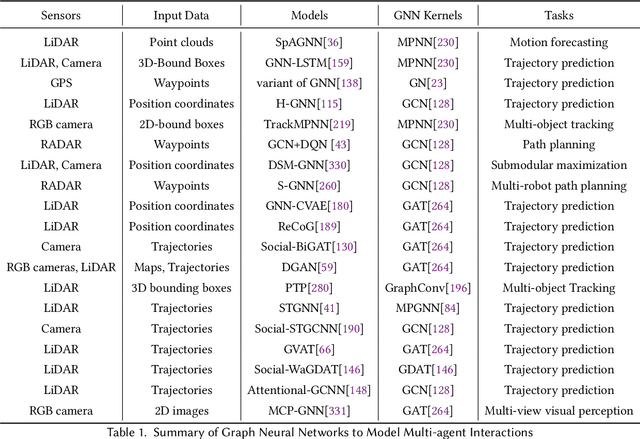

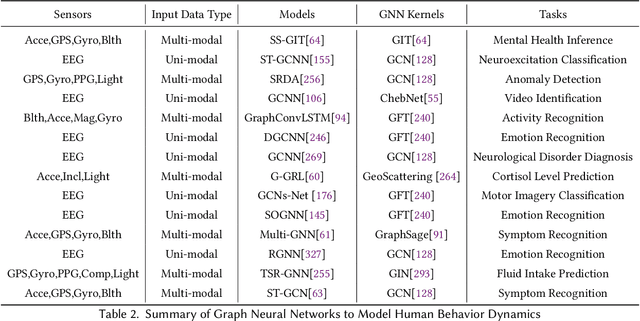
Abstract:The Internet of Things (IoT) boom has revolutionized almost every corner of people's daily lives: healthcare, home, transportation, manufacturing, supply chain, and so on. With the recent development of sensor and communication technologies, IoT devices including smart wearables, cameras, smartwatches, and autonomous vehicles can accurately measure and perceive their surrounding environment. Continuous sensing generates massive amounts of data and presents challenges for machine learning. Deep learning models (e.g., convolution neural networks and recurrent neural networks) have been extensively employed in solving IoT tasks by learning patterns from multi-modal sensory data. Graph Neural Networks (GNNs), an emerging and fast-growing family of neural network models, can capture complex interactions within sensor topology and have been demonstrated to achieve state-of-the-art results in numerous IoT learning tasks. In this survey, we present a comprehensive review of recent advances in the application of GNNs to the IoT field, including a deep dive analysis of GNN design in various IoT sensing environments, an overarching list of public data and source code from the collected publications, and future research directions. To keep track of newly published works, we collect representative papers and their open-source implementations and create a Github repository at https://github.com/GuiminDong/GNN4IoT.
Offline Contextual Multi-armed Bandits for Mobile Health Interventions: A Case Study on Emotion Regulation
Aug 21, 2020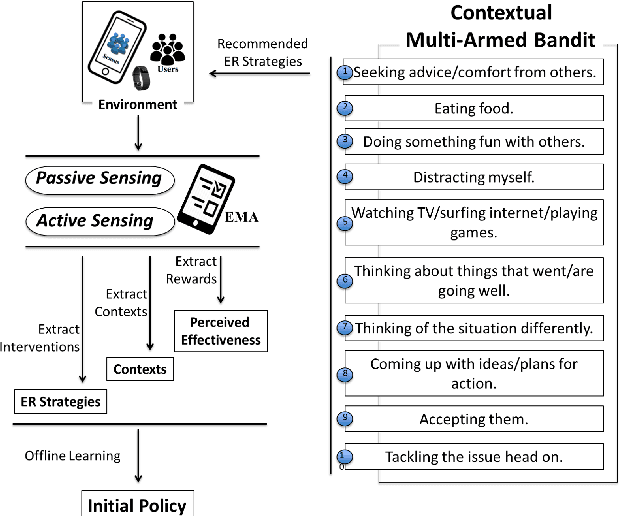
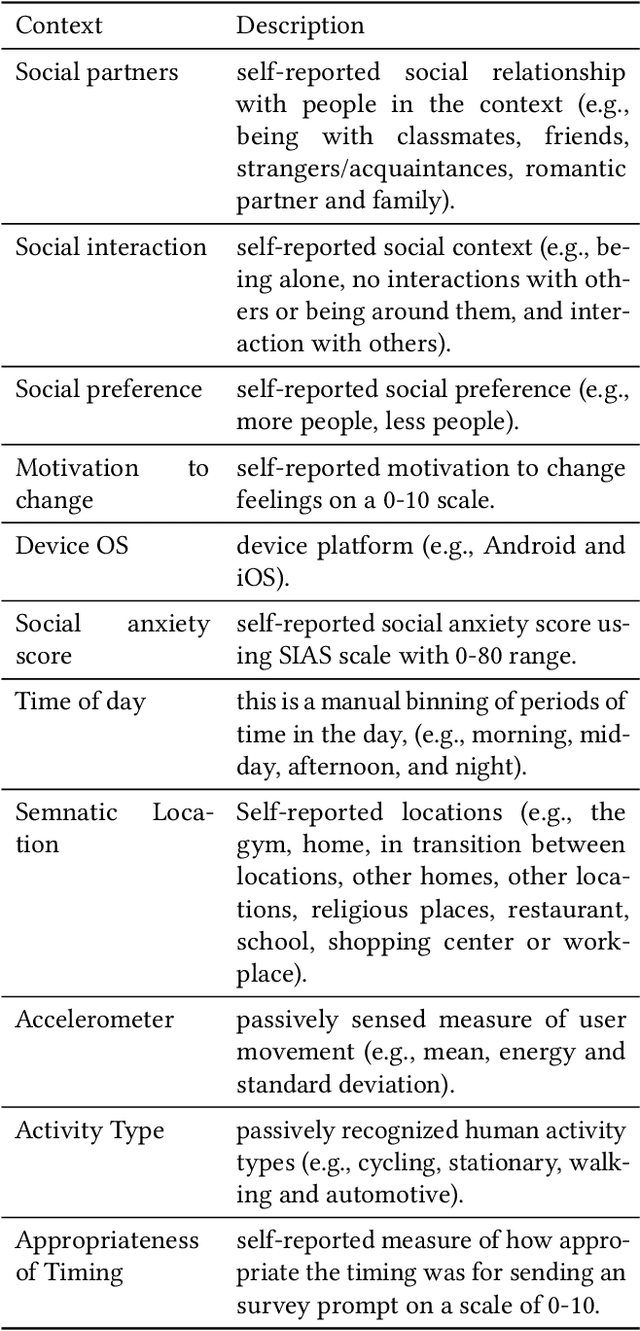

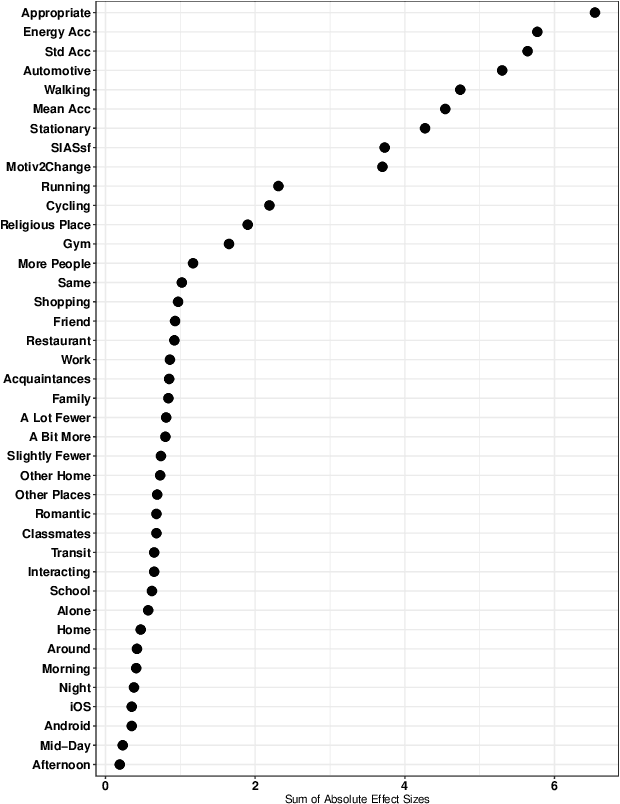
Abstract:Delivering treatment recommendations via pervasive electronic devices such as mobile phones has the potential to be a viable and scalable treatment medium for long-term health behavior management. But active experimentation of treatment options can be time-consuming, expensive and altogether unethical in some cases. There is a growing interest in methodological approaches that allow an experimenter to learn and evaluate the usefulness of a new treatment strategy before deployment. We present the first development of a treatment recommender system for emotion regulation using real-world historical mobile digital data from n = 114 high socially anxious participants to test the usefulness of new emotion regulation strategies. We explore a number of offline contextual bandits estimators for learning and propose a general framework for learning algorithms. Our experimentation shows that the proposed doubly robust offline learning algorithms performed significantly better than baseline approaches, suggesting that this type of recommender algorithm could improve emotion regulation. Given that emotion regulation is impaired across many mental illnesses and such a recommender algorithm could be scaled up easily, this approach holds potential to increase access to treatment for many people. We also share some insights that allow us to translate contextual bandit models to this complex real-world data, including which contextual features appear to be most important for predicting emotion regulation strategy effectiveness.
Cluster-based Approach to Improve Affect Recognition from Passively Sensed Data
Jan 31, 2018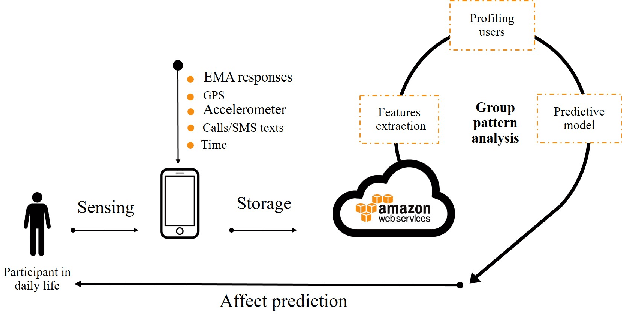
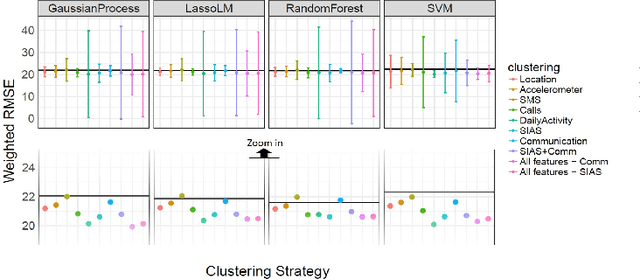
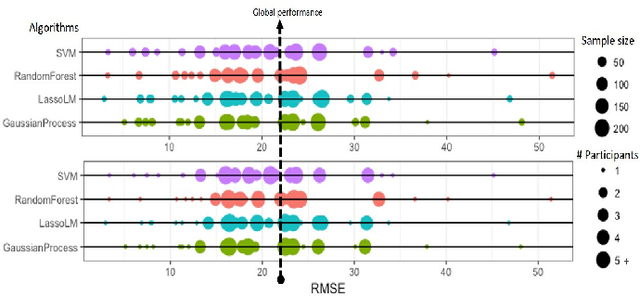
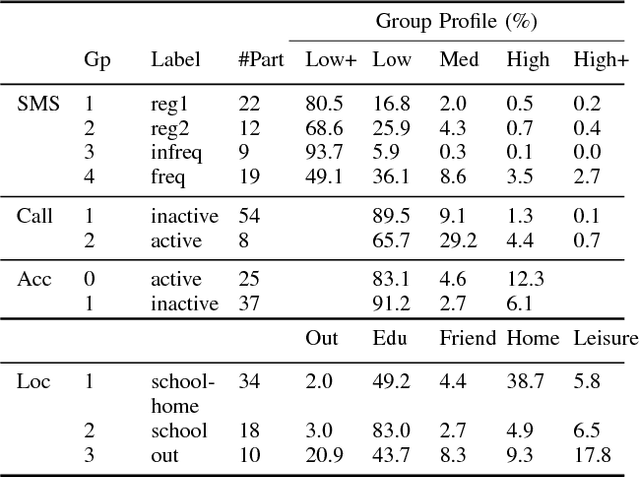
Abstract:Negative affect is a proxy for mental health in adults. By being able to predict participants' negative affect states unobtrusively, researchers and clinicians will be better positioned to deliver targeted, just-in-time mental health interventions via mobile applications. This work attempts to personalize the passive recognition of negative affect states via group-based modeling of user behavior patterns captured from mobility, communication, and activity patterns. Results show that group models outperform generalized models in a dataset based on two weeks of users' daily lives.
 Add to Chrome
Add to Chrome Add to Firefox
Add to Firefox Add to Edge
Add to Edge